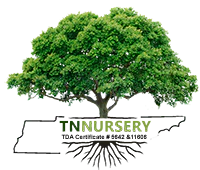Running Cedar
Regular price
$7.99
Regular price
Sale price
$7.99
Unit price
per
The aesthetically pleasing Running Cedar is a great addition to any lawn or garden. It is the perfect ground cover and it is also environmentally friendly because it absorbs toxins. Hardy planting zone from 4-9 provide the best growth potential.
Also known by its scientific name Diphasiastrum digitatum, it is part of the Lycopodiaceae family. This moss is thick and boasts a rich green appearance. It grows really well in most any environment and only needs minimal sunlight. Sprouting usually occurs between July and October.
This moss can be traced back over 410 million years and is known as one of the first identified vascular plants. It is found in eastern North America and Canada then as far south as Florida.
People who use parts of it should be aware that the spores are also highly flammable due to the oil content. Spores should be handled with great care.
It shoots straight up with horizontal stems that range from 3-8 inches in length. The fan-shaped moss releases spores as opposed to seeds. Because it has no flowers, pollination is not required. Maintenance is pretty easy. This moss needs very little to survive and thrive. It is also tolerant to drought, heat, and cold. It is great for preventing the spread of grass and other invasive weeds. So it can mix in other plants with no problem.
This type of moss only needs to be planted once. Even in the worst conditions, they manage to grow back every year. They also keep your other plants in the garden safe and healthy by removing toxins in the soil.
Read less
Also known by its scientific name Diphasiastrum digitatum, it is part of the Lycopodiaceae family. This moss is thick and boasts a rich green appearance. It grows really well in most any environment and only needs minimal sunlight. Sprouting usually occurs between July and October.
This moss can be traced back over 410 million years and is known as one of the first identified vascular plants. It is found in eastern North America and Canada then as far south as Florida.
People who use parts of it should be aware that the spores are also highly flammable due to the oil content. Spores should be handled with great care.
The Appearance Running Cedar
It shoots straight up with horizontal stems that range from 3-8 inches in length. The fan-shaped moss releases spores as opposed to seeds. Because it has no flowers, pollination is not required. Maintenance is pretty easy. This moss needs very little to survive and thrive. It is also tolerant to drought, heat, and cold. It is great for preventing the spread of grass and other invasive weeds. So it can mix in other plants with no problem.
Benefits Of Running Cedar
This type of moss only needs to be planted once. Even in the worst conditions, they manage to grow back every year. They also keep your other plants in the garden safe and healthy by removing toxins in the soil.
Utilizing Running Cedar
Another great use for Running Cedar is the prevention of soil erosion. Specifically in mining areas, the moss has worked wonders in extracting toxins and pollutants from the soil. The plant can also absorb about 10 times its own weight making it ideal for flood zones.Read less
Quantity
In Stock
Sold out
Fast Shipping —
Nationwide!
Secure checkout
with







